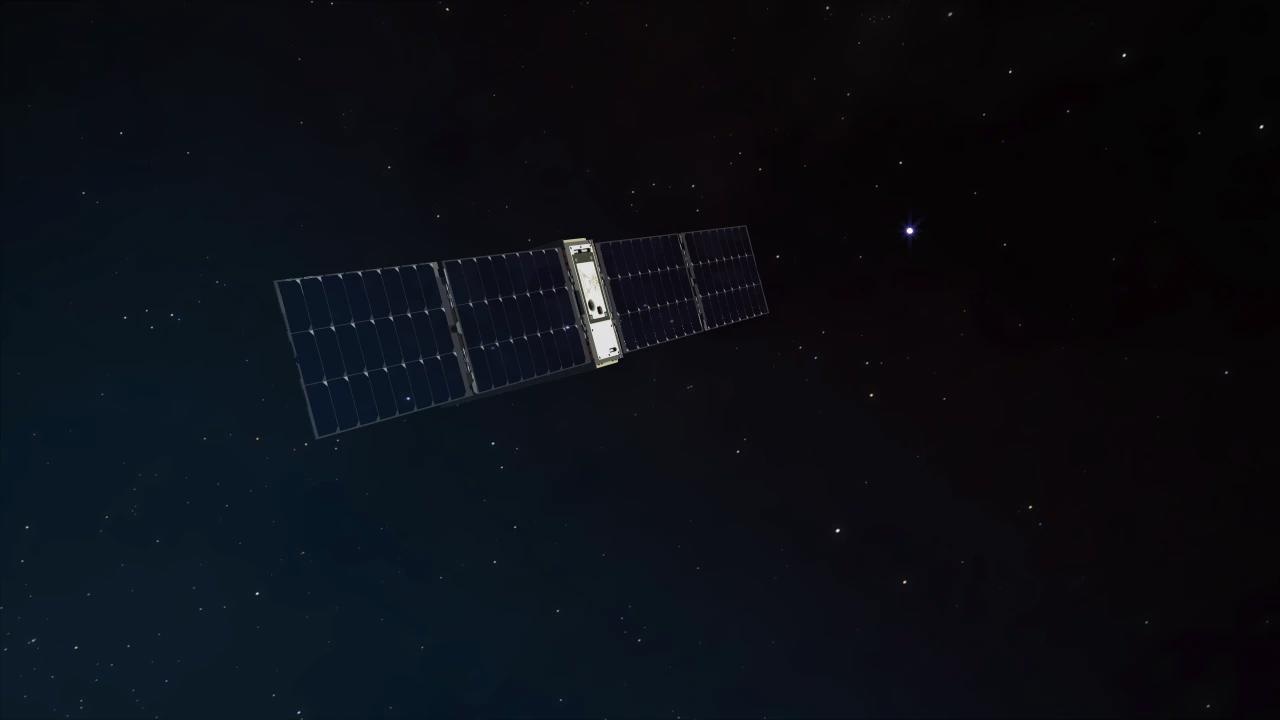Reviewed by Lexie CornerMar 22 2024
NASA’s shoebox-sized satellite BurstCube is en route to the International Space Station to study the most vigorous explosions in the universe.
 BurstCube, shown in this artist’s concept, will orbit Earth as it hunts for short gamma-ray bursts. Image Credit: NASA's Goddard Space Flight Center Conceptual Image Lab
BurstCube, shown in this artist’s concept, will orbit Earth as it hunts for short gamma-ray bursts. Image Credit: NASA's Goddard Space Flight Center Conceptual Image Lab
The spacecraft is part of SpaceX's 30th Commercial Resupply Services mission, which blasted off at 4:55 p.m. EDT on Thursday, March 21st, 2024, from Launch Complex 40 at Cape Canaveral Space Force Station in Florida. BurstCube will be unpacked upon arrival at the station and then launched into orbit to find, identify, and investigate short bursts of high-energy light or short gamma-ray bursts.
BurstCube may be small, but in addition to investigating these extreme events, it’s testing new technology and providing an important experience for early career astronomers and aerospace engineers.
Jeremy Perkins, Principal Investigator, Goddard Space Flight Center
Brief bursts of gamma radiation typically follow collisions between neutron stars, which are the extremely dense leftovers of massive stars that burst into supernovae. As they spiral together, neutron stars can release gravitational waves, which are rippling effects on space-time.
Both gravitational waves and light can reveal different aspects of gamma-ray bursts, which is why astronomers are interested in studying them. This method is a part of the emerging field of multi-messenger astronomy, which aims to understand the universe.
Short gamma-ray bursts are produced by collisions that produce heavy elements, such as iodine and gold, which are necessary for life.
The only time gravitational waves and light from the same event have been observed simultaneously is in 2017, known as GW170817. The scientific community has been anticipating and readying itself for further simultaneous discoveries ever since, as it was a significant turning point in the field of multi-messenger astronomy.
BurstCube’s detectors are angled to allow us to detect and localize events over a wide area of the sky. Our current gamma-ray missions can only see about 70 % of the sky at any moment because Earth blocks their view. Increasing our coverage with satellites like BurstCube improves the odds of catching more bursts coincident with gravitational wave detections.
Israel Martinez, Research Scientist, University of Maryland
The primary instrument of BurstCube is capable of detecting gamma rays with energies between 50,000 and 1 million electron volts. In contrast, visible light has an electron voltage of 2 to 3 volts.
A layer of cesium iodide known as a scintillator is encountered by gamma rays as they enter one of BurstCube’s four detectors, and this layer transforms the radiation into visible light. After passing through an array of 116 silicon photomultipliers, the light enters a second layer, transforming into an electron pulse. This is what BurstCube measures. The team observes one pulse in the instrument readout, which gives the exact arrival time and energy for each gamma ray. The angled detectors inform the team of the event’s general direction.
BurstCube is a member of the CubeSat spacecraft class. These tiny satellites are available in several standard sizes, each based on a cube with a diameter of 10 cm (3.9 inches). CubeSats offer affordable access to space to support innovative research, test novel technologies, and assist in training the upcoming generation of engineers and scientists in mission planning, execution, and testing.
We were able to order many of BurstCube’s parts, like solar panels and other off-the-shelf components, which are becoming standardized for CubeSats. That allowed us to focus on the mission’s novel aspects, like the made-in-house components and the instrument, which will demonstrate how a new generation of miniaturized gamma-ray detectors work in space.
Julie Cox, Mechanical Engineer, Goddard Space Flight Center
NASA’s Goddard Space Flight Center in Greenbelt, Maryland, is in charge of BurstCube. It is supported by NASA Headquarters' Astrophysics Division of the Science Mission Directorate. University of Alabama in Huntsville, University of Maryland, College Park, University of the Virgin Islands, Universities Space Research Association in Washington, Naval Research Laboratory in Washington, and NASA's Marshall Space Flight Center in Huntsville are among the institutions involved in the BurstCube collaboration.